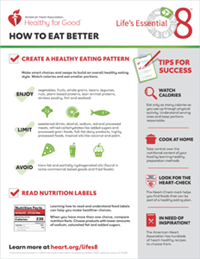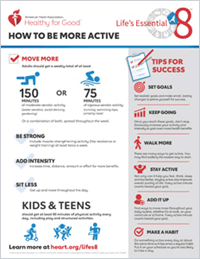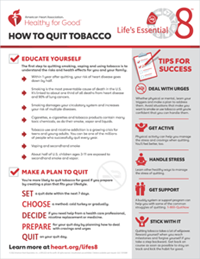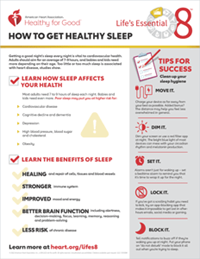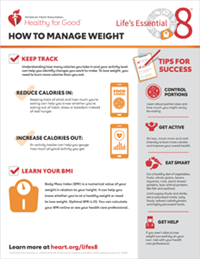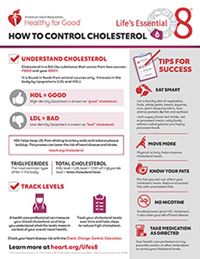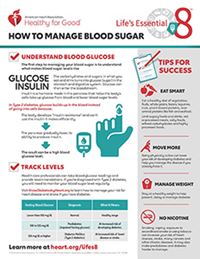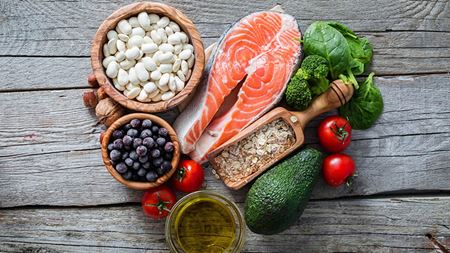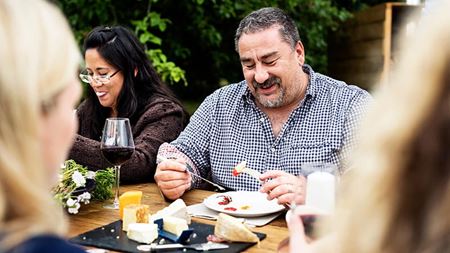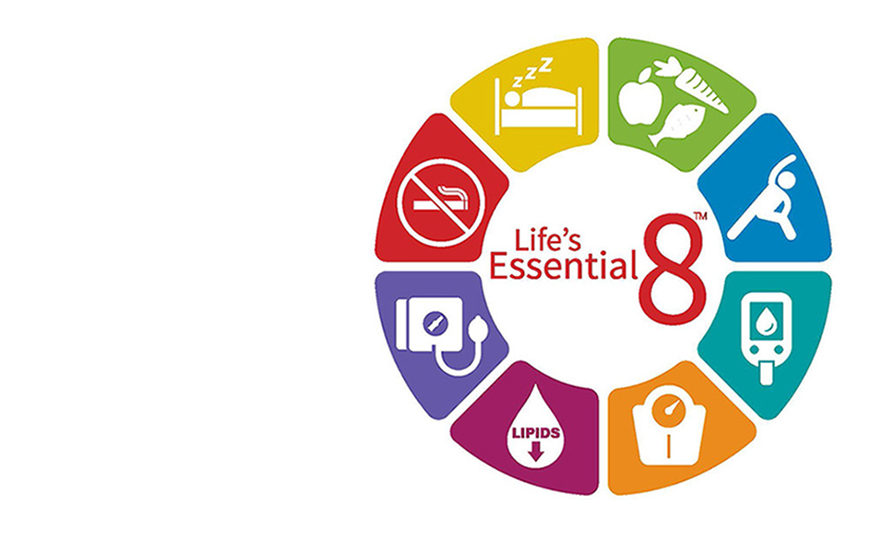
Life’s Essential 8 comprises two major areas:
Health Behaviors and Health Factors
1. Eat Better
Aim for an overall healthy eating pattern that includes whole foods, lots of fruits and vegetables, lean protein, nuts, seeds, and cooking in non-tropical oils such as olive and canola.
View or Download Fact SheetEnglish (PDF) | Spanish (PDF)
2. Be More Active
Adults should get 2 ½ hours of moderate or 75 minutes of vigorous physical activity per week. Kids should have 60 minutes every day, including play and structured activities.
View or Download Fact Sheet
English (PDF) | Spanish (PDF)
3. Quit Tobacco
View or Download Fact Sheet
English (PDF) | Spanish (PDF)
4. Get Healthy Sleep
Learn how to get adequate sleep.
View or Download Fact Sheet
English (PDF) | Spanish (PDF)
5. Manage Weight
Learn to lose or manage weight.
View or Download Fact SheetEnglish (PDF) | Spanish (PDF)
6. Control Cholesterol
Learn how to control cholesterol.
View or Download Fact SheetEnglish (PDF) | Spanish (PDF)
7. Manage Blood Sugar
Learn how to control blood sugar.
View or Download Fact SheetEnglish (PDF) | Spanish (PDF)
8. Manage Blood Pressure
Learn how to manage blood pressure.
View or Download Fact Sheet
English (PDF) | Spanish (PDF)
Life’s Essential 8™ for Kids
My Life Check® can help
Now that you know about Life’s Essential 8, use My Life Check, an online tool to assess your own heart health and better understand your risk for heart disease and stroke.
